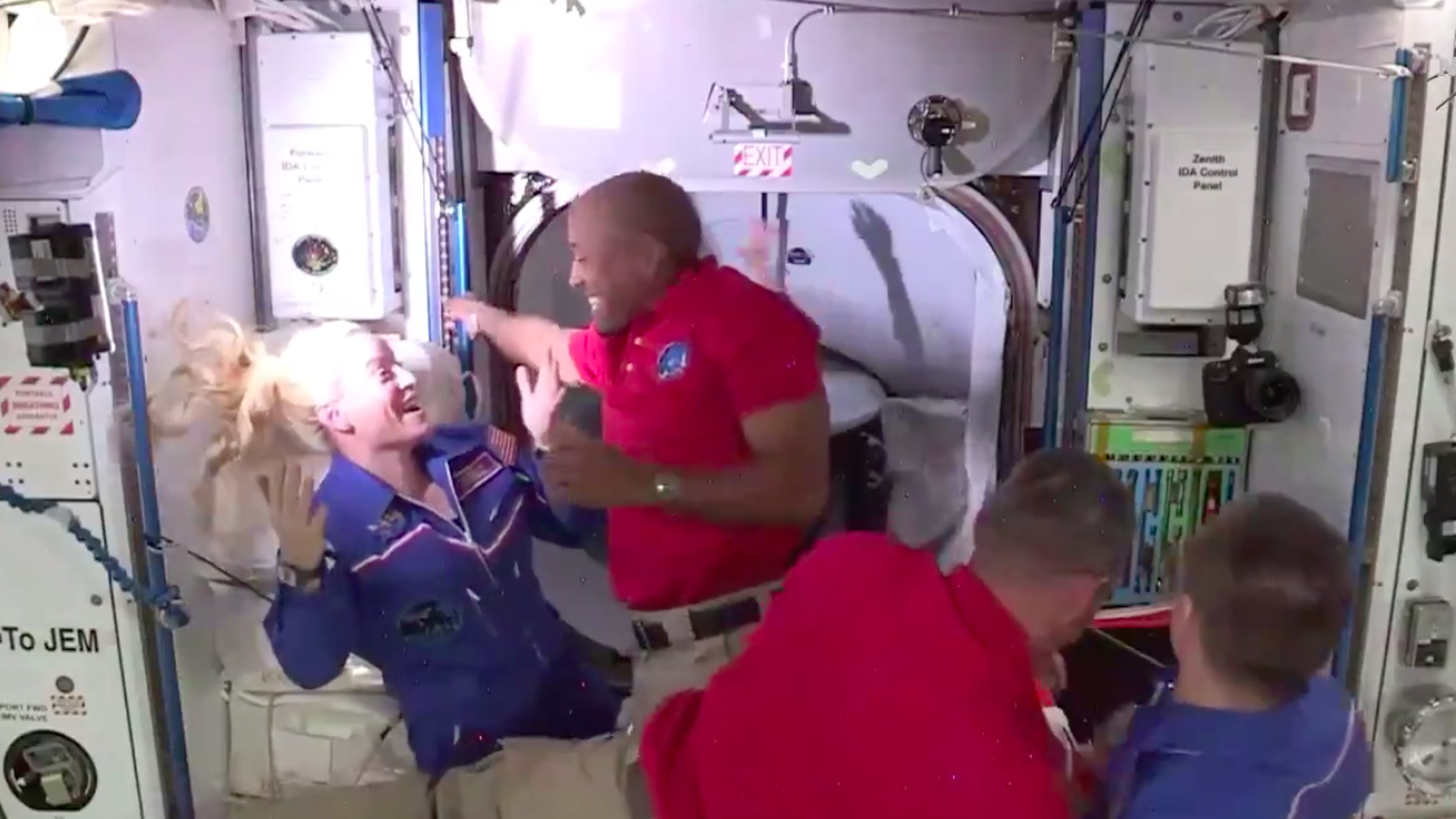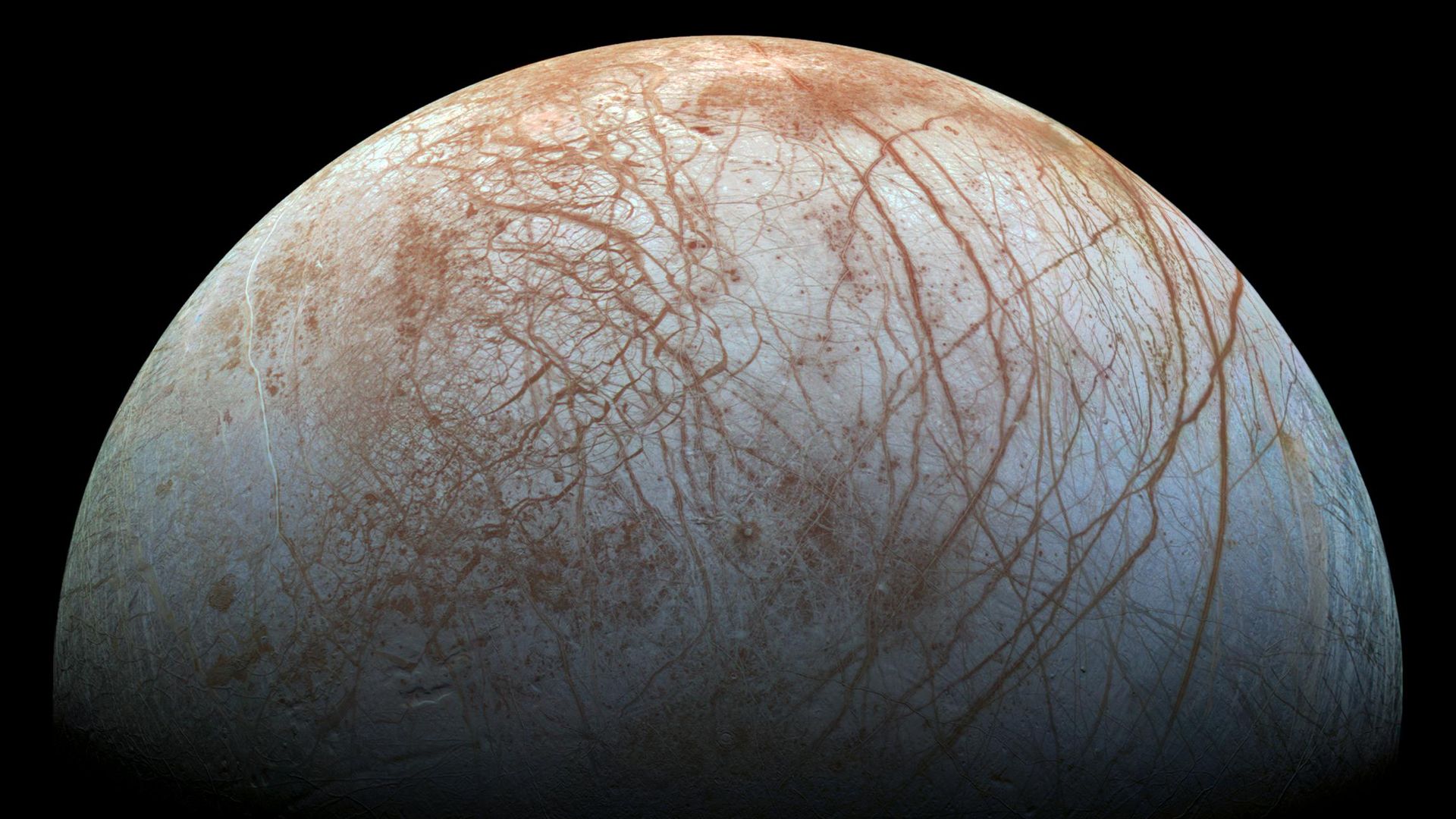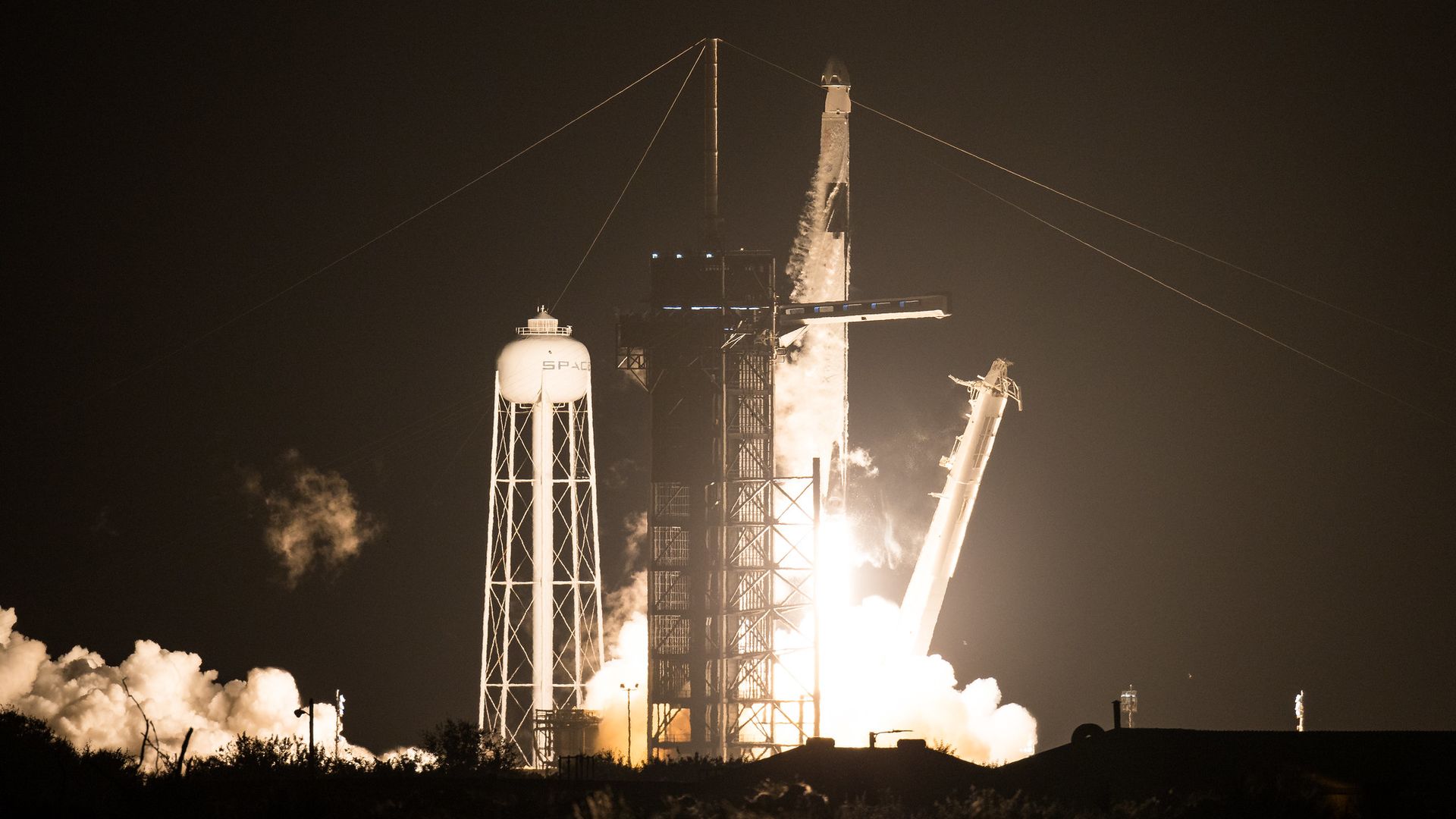| |
| |
| |
| Presented By Northrop Grumman |
| |
| Axios Space |
| By Miriam Kramer ·Nov 17, 2020 |
| Thanks for reading Axios Space. At 1,416 words, this week's newsletter will take you about 5 minutes to read. - Please send your tips, questions and favorite zero-G indicators to miriam.kramer@axios.com, or if you received this as an email, just hit reply.
|
| |
| |
| 1 big thing: The U.S.-China split in space |
 |
|
| Illustration: Aïda Amer/Axios |
| |
| China and the U.S. don't collaborate in space — a decades-old divide that is shaping the future of both nations' space programs, I write with my colleague Alison Snyder. Why it matters: U.S. semiconductor companies and those in other sectors are under pressure — from politicians and consumers — to become less reliant on China. The record of the nations' parallel ambitions in space shows what the U.S. gains and loses when it cuts China off. Catch up quick: China has a flourishing space program with big ambitions. The nation is expected to build a space station in orbit in the coming years and eventually plans to send people to the Moon. - Those plans run in parallel to U.S. ambitions to send people back to the lunar surface as the International Space Station program comes to an end.
- Both nations also have strong military presences in orbit: China's tests of its anti-satellite weapons worry many U.S. space watchers that the nation doesn't adhere to widely accepted norms in orbit. The U.S. relies on spy satellites and other assets in space to fight wars.
- Unlike arrangements with other U.S. allies and adversaries that have so far held peace between powers in space, NASA and China are prevented from cooperating in space without congressional approval under the Wolf Amendment, first passed in 2011.
Where it stands: This separation in space means the U.S. and China sometimes pursue different technologies and goals, and build separate international collaborations. - Broad export controls cost the U.S. space industry access to the growing Chinese market.
- Still, the U.S. space program as a whole is stronger and is likely to remain so, Matthew Daniels of Georgetown University writes in a new report from Johns Hopkins Applied Physics Laboratory.
But the U.S.-China separation in space "may have long-term costs that exceed their benefits to America," the report says. - The lack of cooperation means the U.S. may not get timely access to scientific data from China's ambitious missions to the Moon and Mars.
- And it makes it difficult for the U.S. to understand — and therefore compete with — the Chinese space program, Daniels writes, while it risks "ceding international leadership opportunities" for the U.S. in space and reducing opportunities to de-escalate conflict in space.
- If the U.S. is focused on international leadership and managing risk in space, "some narrow relaxation" of policies may be needed, he writes.
Between the lines: The U.S. effectively cut China off in part as a way to limit China's advancements in space, but that largely hasn't worked. - "The hope was that if we wall off our technologies from China, they'll never get it," Brian Weeden of the Secure World Foundation told Axios. "But of course they just did it themselves. So we also lost a China that would be reliant on other countries' technologies, and instead, they have this burgeoning indigenous industrial base that is rapidly advancing."
Yes, but: It's not clear China would want to collaborate on big missions in space with the U.S. if that option was on the table. - There are concerns about whether Beijing would be transparent if the two nations did collaborate and how to navigate a sector where civil and military lines blur.
- "The ability to learn about their intentions, plans and directions through engagement really only works if they're willing to share information from their side," Daniels told Axios. "I don't know if we have a clear indication of that."
The big picture: AI, biotech and other sectors in the U.S. and China are more deeply entwined today than the space industry, making it more difficult to divorce from one another. - "Like a couple quarreling in a shared house or, more dramatically, like conjoined twins whose circulatory systems cannot be separated, China and the United States can find means of securing greater independence, but they cannot be 'decoupled,'" Richard Danzig and Lorand Laskai write in an accompanying paper.
Subscribe to receive Alison's weekly Axios Science newsletter. |
    |
| |
| |
| 2. The space station's new crew |
 |
|
| Victor Glover and Kate Rubins go in for a hug on the ISS. Photo: NASA TV |
| |
| The International Space Station now has four new crew members delivered care of SpaceX. Why it matters: This mission marks the first fully operational flight of SpaceX's Crew Dragon and ushers in a new era of regular, human missions to orbit operated by the company for NASA. Where it stands: NASA astronauts Mike Hopkins, Victor Glover, Shannon Walker and Japan's Soichi Noguchi docked to the space station at 11:01pm ET Monday, floating inside their new home about two hours later. - The Crew Dragon launched to orbit from Florida on Sunday evening. The four crew members spent about 27 hours in transit, eating, sleeping and managing the spacecraft's controls during their trip.
- Of note: Glover is now the first Black American to live on the space station for a long-duration mission.
1 fun thing: A Baby Yoda plush doll joined the four astronauts aboard their capsule as an indicator for when the crew was in zero gravity. |
    |
| |
| |
| 3. Our new mini-moon |
 |
|
| An animation showing the new mini-moon's orbit. Gif: NASA/JPL-Caltech |
| |
| Earth has captured a new mini-moon that will orbit our planet for a few months before heading back out on its cosmic journey through the solar system. The big picture: Scientists think our planet likely has some kind of "mini-moon" in orbit at any given time. Details: This mini-moon likely isn't an asteroid or any kind of natural detritus. NASA scientists think the mini-moon is actually the spent upper stage of a rocket that boosted the failed Surveyor 2 toward the Moon in 1966. - The object — named 2020 SO — entered into the part of space where Earth's gravity is dominant on Nov. 8 and is expected to stay there until it heads out to a new orbit around the Sun in March 2021.
- Scientists figured out that the mini-moon is likely a rocket body by observing it and piecing together its past orbits.
- "One of the possible paths for 2020 SO brought the object very close to Earth and the Moon in late September 1966," NASA's Paul Chodas said in a statement. "It was like a eureka moment when a quick check of launch dates for lunar missions showed a match with the Surveyor 2 mission."
Between the lines: Earth's adoption of this mini-moon illustrates how profoundly humanity has changed the space environment. - Even objects like this one from the earliest days of NASA are still floating around as space junk, possibly threatening operational satellites and spacecraft today.
- NASA estimates there are millions of pieces of space junk in orbit today, and it's just getting more crowded up there as new satellites launch each month.
|
    |
| |
| |
| A message from Northrop Grumman |
| It's impossible to connect the joint force as one. Until it's not |
| |
 |
| |
| How is Northrop Grumman Cyber defining possible? Here's how: We provide powerful, scalable networks and integrated capabilities that ensure warfighters and the systems they depend on can act as one joint force across every domain, service and mission. Learn more about how. |
| |
| |
| 4. Where Europa's water lives |
 |
|
| Europa. Photo: NASA/JPL-Caltech/SETI Institute |
| |
| The plumes seen erupting from Jupiter's moon Europa might be fed by water trapped in the world's crust, according to a new study. Why it matters: Europa is thought to be one of the best places to hunt for life in the solar system, in part because of the subsurface ocean scientists expect exists beneath its icy crust. What they found: The new study, published in the journal Geophysical Research Letters, suggests that instead of water shooting directly from the subsurface ocean, the plumes may be coming from trapped pools in the moon's crust instead. - This could complicate efforts to use those plumes to get an easy sample of Europa's ocean.
- If the plumes are erupting from trapped water in the crust and not the ocean itself, that water may not be representative of the habitability of the rest of the ocean.
- "Understanding where these water plumes are coming from is very important for knowing whether future Europa explorers could have a chance to actually detect life from space without probing Europa's ocean," Gregor Steinbrügge, one of the authors of the study, said in a statement.
What's next: This new model of Europa's plumes and water will help scientists as they're developing NASA's Europa Clipper mission to the far-away moon. - That mission, expected to launch in the mid-2020s, is designed to gather more information about whether Europa is habitable or not.
|
    |
| |
| |
| 5. Out of this world reading list |
 |
|
| The Falcon 9 rocket carrying a crew of astronauts launches. Photo: NASA/Joel Kowsky |
| |
| Boeing tried to profit from inside information after losing NASA contract (Christian Davenport, Washington Post) European Vega rocket suffers second failure in three launches (Stephen Clark, Spaceflight Now) What is a particle? (Natalie Wolchover, Quanta) SpaceX launches new crew of astronauts for NASA (Axios) |
    |
| |
| |
| 6. Your weekly dose of awe: A galactic jewel |
 |
|
| Photo: X-ray: NASA/CXC/UNAM/J. Toalá et al.; Optical: NASA/STScI |
| |
| Sometimes photos taken of objects thousands of light-years away echo the beauty of objects on Earth. - This new photo, taken by the Chandra X-ray Observatory, shows a planetary nebula shining like a jewel 7,800 light-years from Earth.
- Planetary nebulas like this one — named IC 4593 — form when stars that are about the same mass as the Sun burn through their fuel and expend their outer layers that cool and form those distinctive clouds around the core.
- "In the case of the Sun, its outer layers could extend as far as the orbit of Venus during its red giant phase several billion years in the future," according to a Chandra statement.
|
    |
| |
| |
| A message from Northrop Grumman |
| It's impossible to connect the joint force as one. Until it's not |
| |
 |
| |
| How is Northrop Grumman Cyber defining possible? Here's how: We provide powerful, scalable networks and integrated capabilities that ensure warfighters and the systems they depend on can act as one joint force across every domain, service and mission. Learn more about how. |
| |
| Big thanks to Alison Snyder, Scott Rosenberg and Sheryl Miller for editing this week's edition. If this email was forwarded to you, subscribe here. 👩🚀 |









No comments:
Post a Comment